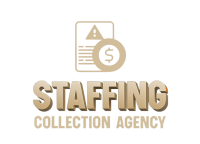In the fast-paced world of staffing, last-minute cancellations can pose significant challenges for companies. Securing payment for these cancellations is crucial to maintaining financial stability and ensuring fair compensation for the services provided. This article explores the recovery system, recovery recommendations, and competitive collection rates to help companies navigate the complexities of payment recovery in the face of last-minute staffing cancellations.
Key Takeaways
- Understanding the Recovery System is essential for effectively navigating the phases of recovery.
- Recovery Recommendations provide clear guidelines for decision-making, including closure of the case and upfront legal costs.
- Competitive Collection Rates offer tailored rates based on the number of claims submitted, providing cost-effective options for payment recovery.
- Phase Three involves two key recommendations: closure of the case if recovery is unlikely, or litigation with upfront legal costs if legal action is pursued.
- The Recovery System includes Phase One, Phase Two, and Phase Three, each with specific actions and recommendations for payment recovery.
Understanding the Recovery System
Exploring Phase One
Within the first 24 hours of a staffing cancellation, Phase One kicks into action. It’s a rapid response to mitigate losses, starting with a series of letters dispatched to the debtor. The urgency is palpable as the recovery system initiates contact through various channels.
- The first of four letters is sent via US Mail.
- Skip-tracing and investigation commence to secure optimal financial and contact data.
- Daily attempts are made by collectors through calls, emails, texts, and faxes.
Expect relentless pursuit in the initial 30 to 60 days. If this phase doesn’t yield results, the case escalates to Phase Two, involving our network of affiliated attorneys.
Navigating Phase Two
Once the initial attempts to recover funds have been exhausted, Phase Two commences with a strategic escalation. Your case is transferred to a local attorney within our network, ensuring that the debtor is approached with the necessary legal gravitas. Expect the following actions:
- Immediate drafting and dispatch of a demand letter on law firm letterhead.
- Persistent attempts to contact the debtor via phone, complementing the letter series.
In this phase, the combination of legal correspondence and direct communication aims to increase the pressure on the debtor, thereby enhancing the likelihood of a successful recovery.
Should these efforts not yield the desired outcome, a detailed report will be provided, outlining the complexities of the case and our advised course of action for Phase Three.
Considering Phase Three
When the recovery process escalates to Phase Three, a critical decision point is reached. The feasibility of recovery is rigorously assessed, and the path forward hinges on this evaluation. If prospects are dim, a closure of the case is advised, absolving you of any financial obligations to our firm or affiliated attorneys.
Should litigation be the recommended course, you’re faced with a choice. Opting out means no cost incurred, with the option to continue standard collection efforts. Conversely, choosing litigation necessitates upfront legal costs, typically between $600 to $700. These costs cover court fees and filing expenses, initiating a lawsuit to reclaim the full amount due, including litigation costs.
The decision to litigate is significant, not only for the potential to recover funds but also for the financial commitment required upfront. It’s a calculated risk that could lead to either resolution or closure without further dues.
Our competitive collection rates are structured to align with the number of claims. Here’s a quick overview:
| Claims Count | Rate for Accounts < 1 Year | Rate for Accounts > 1 Year | Rate for Accounts < $1000 | Rate for Attorney Placed Accounts |
|---|---|---|---|---|
| 1-9 | 30% | 40% | 50% | 50% |
| 10+ | 27% | 35% | 40% | 50% |
These rates are designed to be fair and incentivize successful recoveries, ensuring that our interests are directly aligned with your success.
Recovery Recommendations
Closure of the Case
When the pursuit of last-minute staffing cancellations reaches a standstill, a critical decision looms: to close the case or to push forward. Closure represents a strategic retreat, acknowledging when further efforts may be futile. It’s a step taken after exhaustive measures, ensuring that every avenue has been explored.
Closure does not equate to defeat. It’s a calculated move, often after Phase Three of the Recovery System, where the likelihood of recovery is deemed low. In such instances, clients owe nothing further, a testament to a no-win, no-fee commitment.
The closure of a case is a clear-cut conclusion to a complex process. It signifies the end of active pursuit but not the end of potential recovery.
For cases that close without litigation:
- No additional fees are owed to the firm or affiliated attorneys.
- Clients may opt for standard collection activities to continue.
- The decision is made with full transparency and guidance.
In the event of closure post-litigation, the same principle applies: no recovery, no fees. This ensures that clients are protected financially, even when outcomes are not as expected.
Litigation Decision
When the recovery system escalates to a potential litigation scenario, a critical decision point is reached. The choice to litigate is not one to be taken lightly, as it involves additional expenses and resources. Before proceeding, consider the following:
- The strength of the case against the debtor
- The debtor’s ability to pay
- The estimated legal costs versus the potential recovery amount
Deciding whether to litigate requires a careful cost-benefit analysis. It’s essential to weigh the likelihood of successful recovery against the upfront legal costs and the impact on your business operations.
If litigation is deemed the appropriate course of action, be prepared for upfront legal costs, which typically range from $600 to $700. These fees cover court costs, filing fees, and other related expenses. Here’s a breakdown of potential costs:
| Expense Type | Estimated Cost |
|---|---|
| Court Costs | $300 – $400 |
| Filing Fees | $200 – $300 |
Remember, these costs are an investment towards recovering the debt owed. However, if the attempts to collect via litigation fail, the case will be closed, and you will owe nothing further to the firm or the affiliated attorney.
Upfront Legal Costs
When litigation is the chosen path, upfront legal costs become a pivotal factor. These costs are typically between $600 and $700, covering court fees, filing charges, and other related expenses. It’s crucial to understand that these are initial investments made in pursuit of debt recovery.
Deciding to litigate means committing to these costs, with the understanding that they enable legal action on your behalf.
Should litigation not result in recovery, rest assured that no further fees will be owed to our firm or affiliated attorneys. Below is a breakdown of potential upfront costs:
| Expense Type | Estimated Cost |
|---|---|
| Court Costs | $300 – $400 |
| Filing Fees | $200 – $300 |
Remember, these figures are estimates and can vary based on the debtor’s jurisdiction. It’s a financial step that requires careful consideration, but one that can lead to full recovery of the owed amount.
Competitive Collection Rates
Rates for 1-9 Claims
When submitting fewer than ten claims, the financial commitment to recovery reflects the volume and age of the debts. The rates are tailored to ensure competitiveness while acknowledging the resources required for these smaller batches of claims.
For claims that are less than a year old, the rate is set at 30% of the amount collected. This rate increases to 40% for debts that have aged beyond a year, recognizing the additional effort often needed to secure payment from older accounts. For accounts with a value under $1000, or those that necessitate legal intervention, the rate is 50% of the amount collected.
The tiered structure is designed to balance the urgency of recovery with the practicalities of claim volume and age.
Here’s a concise breakdown of the rates:
| Age of Account | Rate |
|---|---|
| Under 1 year | 30% |
| Over 1 year | 40% |
| Under $1000 | 50% |
| Legal action | 50% |
These rates are crafted to provide a fair compensation for the recovery efforts while maintaining a cost-effective solution for the creditor.
Rates for 10+ Claims
When dealing with a higher volume of claims, economies of scale come into play, offering more favorable collection rates. For 10 or more claims, the rates are structured to incentivize bulk submissions, ensuring that your recovery efforts are as cost-effective as possible.
Accounts under 1 year in age are charged at 27% of the amount collected, a slight reduction from the standard rate, reflecting the increased likelihood of successful recovery for newer debts. For accounts over 1 year in age, the rate is set at 35% of the amount collected, acknowledging the additional challenges that older debts may present.
For accounts under $1000.00, the rate is further reduced to 40% of the amount collected, while accounts placed with an attorney remain at a 50% rate, due to the legal complexities involved.
Here’s a quick breakdown of the rates for 10+ claims:
| Age of Account | Rate of Collection |
|---|---|
| Under 1 year | 27% |
| Over 1 year | 35% |
| Under $1000 | 40% |
| With Attorney | 50% |
It’s essential to consider these rates when planning your debt recovery strategy, as they can significantly impact the overall cost-effectiveness of the process.
Frequently Asked Questions
What is the Recovery System and how does it work?
The Recovery System is a 3-phase process designed to recover company funds. Phase One involves sending letters to debtors, skip-tracing, and attempting to contact debtors. Phase Two includes forwarding the case to an affiliated attorney and demanding payment from the debtor. Phase Three involves recommending closure of the case or litigation, with the option for the client to proceed with legal action and pay upfront legal costs.
What happens if the recovery is not likely in Phase Three?
If recovery is not likely, the case will be recommended for closure, and the client owes nothing to the firm or affiliated attorney.
What are the options if litigation is recommended in Phase Three?
If litigation is recommended, the client has the option to proceed with legal action and pay upfront legal costs. If the client decides not to proceed with legal action, they have the option to withdraw the claim and owe nothing to the firm or affiliated attorney.
What are the upfront legal costs in Phase Three?
The upfront legal costs include court costs, filing fees, etc., typically ranging from $600.00 to $700.00, depending on the debtor’s jurisdiction. Upon payment of these funds, the affiliated attorney will file a lawsuit on the client’s behalf.
What are the competitive collection rates offered by DCI?
DCI provides competitive collection rates tailored to the number of claims submitted within the first week of placing the first account. For 1-9 claims, rates range from 30% to 50% of the amount collected, depending on the age and amount of the account. For 10+ claims, rates range from 27% to 50% of the amount collected.
How does Phase One of the Recovery System work?
Phase One involves sending letters to debtors, skip-tracing, and attempting to contact debtors. If all attempts to resolve the account fail, the case is forwarded to Phase Two, where it is immediately sent to an affiliated attorney within the debtor’s jurisdiction.





